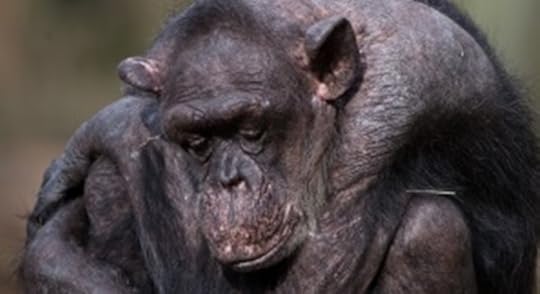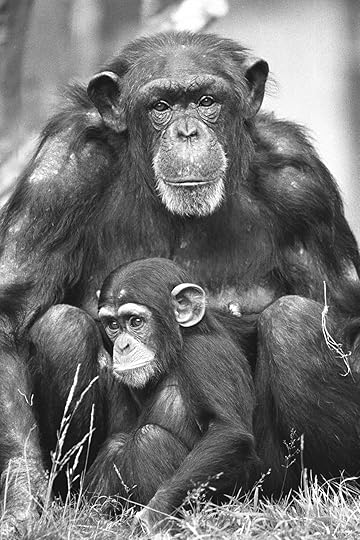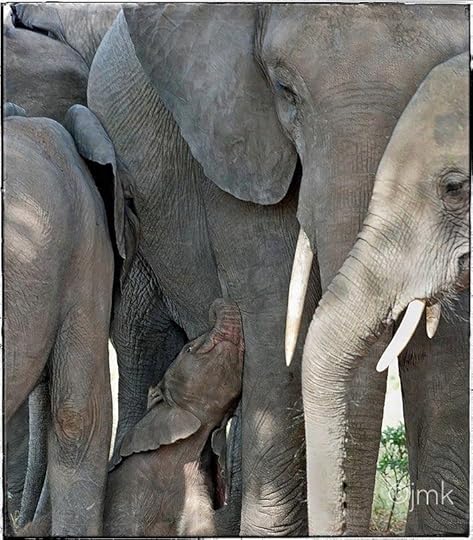What do you think?
Rate this book


336 pages, Hardcover
First published March 5, 2019
As a student, realizing that my biology books were of little help explaining chimpanzee behavior, I picked up a copy of Machiavelli’s The Prince. It offered an insightful, unadorned account of human behavior based on real-life observations of the Borgias, the Medici, and the popes. The book put me in the right frame of mind to write about ape politics at the zoo.----------------------------------------
We know our own inner states imperfectly and often mislead both ourselves and those around us. We’re masters of fake happiness, suppressed fear, and misguided love. This is why I’m pleased to work with nonlinguistic creatures. I’m forced to guess their feelings, but at least they never lead me astray by what they tell me about themselves.




The anthropomorphism argument [that we merely project our emotions onto the animals being studied] is rooted in human exceptionalism. It reflects the desire to set humans apart and deny our animality. To do so remains customary in the humanities and much of the social sciences, which thrive on the notion that the human mind is somehow our own invention…Modern neuroscience makes it impossible to maintain a sharp human-animal dualism.

We have trouble imagining fairness as an evolved trait partly due to how we depict nature. Using evocative phrases such as “survival of the fittest” and “nature red in tooth and claw,” we stress nature’s cruelty, leaving no room for fairness, only the right of the strongest. In the meantime, we forget that animals often depend on each other and survive through cooperation. In fact, they struggle far more against their environment or against hunger and disease than against each other.

The idea that we can achieve optimal sociality only by subduing human biology is antiquated. It doesn’t fit with what we know about hunter-gatherers, other primates, or modern neuroscience. It also promotes a sequential view—first we had human biology, then we got civilization—whereas in reality the two have always gone hand in hand.

We may not be in full control of our emotions, but we aren’t their slaves either. This is why you should never say “my emotions took over” as an excuse for something stupid you did, because you let your emotions take over. Getting emotional has a voluntary side. You let yourself fall in love with the wrong person, you let yourself hate certain others, you allowed greed to cloud your judgment or imagination to feed your jealousy. Emotions are never just emotions, and they are never fully automated. Perhaps the greatest misunderstanding about emotions is that they are the opposite of cognition. We have translated the dualism between body and mind into one between emotion and intelligence, but the two actually go together and cannot operate without each other.What has been learned from the lessons discussed here can be used to improve not only how we treat animals that are housed in zoos, and used in research, but in how livestock can be treated more humanely, reinforcing the work of researchers in this field, such Temple Grandin.

I will only rarely refer to other species as “other animals” or “non-human animals.” For simplicity’s sake, I will mostly call them just “animals,” even though for me, as a biologist, nothing is more self-evident than that we are part of the same kingdom. We are animals. Since I don’t look at our species as emotionally much different from other mammals, and in fact would be hard-pressed to pinpoint uniquely human emotions, we had better pay careful attention to the emotional background we share with our fellow travelers on this planet. - Frans De Waal

While a young woman’s bosom gradually expands, often aided by push-up bras and padding, she, too, becomes a magnet of male attention. She learns the power of cleavage, which gives her clout she’s never enjoyed before, while also opening her up to jealousy and nasty comments from other women. This complex period in a girl’s life, with its massive emotional upheavals and insecurities, reflects the same interplay between power, sex, and rivalry that adolescent female apes also go through.
(and, a few paragraphs later)
Young women are both more available and more valuable because of the reproductive life that lies in front of them. Hence women’s eternal quest to look young via hair-dyeing, makeup, implants, facelifts, and so on.